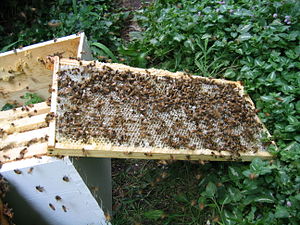It goes without saying that we all are aware of the basics of living an environmentally conscientious life. Most of us do something to live green, whether it involves recycling and reusing, making healthier food choices, driving our cars a little less to save fuel and reduce our carbon footprint and getting some exercise to lose weight so that we feel and look better. Now indulge us while we entertain the notion of Fifty Shades Of Green, a look at our sexual health and relationships and the need to make sure they are sustainable, green and environmentally conscientious. So today, we here at LGBG have some tips to share to ensure that we all live ecofriendly sex lives.
- Value Relationships. A major component of a green sex life is a healthy relationship with a foundation of self-respect and respect for others. To achieve this, it is crucial to avoid hookups or casual sexual relationships, you know — friends with benefits. Strive for intimacy, not just physical release.
- Ditch pornography. Turn off the television, computer, disc payer, etc., and engage your real-life partner for arousal and sexual satisfaction. Rely on authentic scents and sounds. Doing this, you will reduce your carbon footprint and invest in human relationships. That makes for strong sustainability.
- Use caution with lubrication. If lubrication is part of your sexual routine, that is fine, but please make sure you lube up green. Familiarize yourself with the ingredients in various lubricants, and educate yourself on the unsafe ingredients in many popular brands of lubricants, which may pose an increased risk for bacterial or viral infections. When shopping for lubricants, try to locate brands that are made with nontoxic ingredients and that do not contain paraben or glycerin. You will find that many of these products also are latex friendly and eco-friendly.[1]
- Beware of plastic sex toys. Data from adult toy manufacturer, Adam and Eve indicates that “Americans spend $15 billion on sex toys annually, that 44 percent of women 18 to 60 have used one, and that 78 percent of those women were in a relationship when they did.” To this we say, “Buyer beware.” It is best to avoid plastics because so many of them contain phthalates (used to chemically soften rigid plastics and linked to damage to DNA in human sperm. We strongly recommend that you make sure your bedroom toys are “phthalate-free glass, silicone or metal.”[2]
- Save electricity. We all are aware of the importance of reducing the thermostat a few degrees. This does not mean that we have to be cold. Cozy up with that special person and create your own heat. You also will reap the added benefit of increases pheromones, which have been shown to increase fertility and enhance the mood while alleviating depression and stress.
- Eat good food for good sex. A healthy diet is important for your sexual health because “good food will help keep blood pumping to your sexual organs.” Specifically, men should eat plant-based proteins that may have a positive effect on sperm quality. Also, both men and women should avoid diets high in saturated fats that affect LDL cholesterol levels, contributing to depressed libido and sexual performance. So for a healthy sex life, increase the use of fruits, vegetables and whole grains, and decrease the ingestion of red meat. For sweet pleasures, try chocolate (particularly brands that are 70 percent or higher in cocoa and without added milk and sugar), which create the same feelings of pleasure achieved with arousal and orgasm.
We here at LGBG wish for everyone a happy, healthy life, including a healthy, green sex life. We ask you to endorse our Fifty Shades of Green to protect the environment. This is just one more way we can live green, be green.
________________________
Sources for this article:
[1] http://health.howstuffworks.com/sexual-health/sexuality/10-green-sex-tips.htm
[2] http://www.mnn.com/health/fitness-well-being/stories/let’s-talk-about-green-sex-baby
[3] “Lost Your Libido? 6 Smart Diet Choices to Get It Back.” Health Hub from Cleveland Clinic.
[4] http://www.huffingtonpost.com/2012/08/16/sex-toy-sales-per-capita-_n_1790014.html











